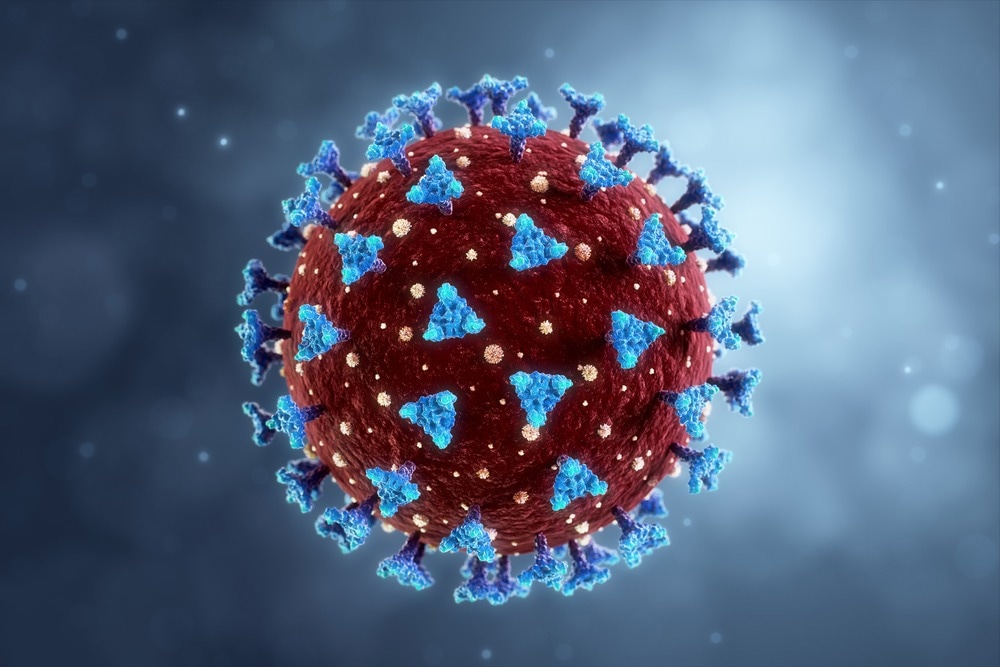In a recent study published in the medRxiv* preprint server, researchers evaluated severe acute respiratory syndrome coronavirus 2 (SARS-CoV-2) infection, re-infection, and vaccination trajectory during the Omicron wave in the United States (US).
 Study: Individuals with recent prior SARS-CoV-2 infection are at reduced risk of Omicron infection and associated hospitalization. Image Credit: JBArt/Shutterstock
Study: Individuals with recent prior SARS-CoV-2 infection are at reduced risk of Omicron infection and associated hospitalization. Image Credit: JBArt/Shutterstock

 *Important notice: medRxiv publishes preliminary scientific reports that are not peer-reviewed and, therefore, should not be regarded as conclusive, guide clinical practice/health-related behavior, or treated as established information.
*Important notice: medRxiv publishes preliminary scientific reports that are not peer-reviewed and, therefore, should not be regarded as conclusive, guide clinical practice/health-related behavior, or treated as established information.
Background
Nearly 588 million coronavirus disease 2019 (COVID-19) cases have been documented worldwide since the start of the SARS-CoV-2 pandemic.
SARS-CoV-2 has continuously altered the immunological makeup of the hosts at the population level. In turn, the antigenic makeup of the virus has continually evolved in response to the immune selection pressure of the hosts. Consequently, novel immuno-elusive SARS-CoV-2 variants like the Omicron and the Delta variants have appeared and led to new infection waves. On the other hand, hosts have developed vaccine-induced immunity, infection-induced immunity, or both, i.e., hybrid immunity.
Omicron sub-lineages like BA5 and BA2.12.1 have invaded previous vaccine-induced immunity (including booster shots), infection-induced immunity, and hybrid immunity. Characterizing SARS-CoV-2 infection, vaccination, and re-infection trends are necessary given Omicron's capacity to re-infect people.
About the study
Comprehension of COVID-19 severity and the risk of SARS-CoV-2 infection demands an assessment of longitudinal clinical information from the real-world scenario.
Therefore, in the present study, the authors examined anonymized longitudinal electronic health records (EHRs) for 389,746 individuals throughout a multi-state health network, including 88,679 fully (two-dose) COVID-19 vaccinated, 184,205 booster vaccinated (three or more doses of vaccine), and 73,184 people with previous SARS-CoV-2 infection. They leveraged the EHRs from a multi-state health network in the US via the nference Clinical Data Analytics Platform.
The investigators retrospectively evaluated re-infections in a sizable multi-state health structure in the US based on the examination of completely de-identified and Health Insurance Portability and Accountability Act of 1996 (HIPAA) compliant EHRs to characterize the severity and incidence of Omicron infections and determine the re-infection risks with Omicron.
The team classified patient groups based on immunity brought on by vaccination, infection, and both combined. Further, they analyzed the frequencies of breakthrough infections and re-infections over the Omicron phase. Furthermore, the researchers compared the COVID-19 severity via the assessments of hospitalization episodes in the study cohorts. Finally, they emphasized the need for a similar theoretical framework to help inform future SARS-CoV-2 vaccine rollout decisions in health policy.
Results
The study results indicated that the rates of COVID-19 during the Omicron predominance were decreased for those with SARS-CoV-2 infection history along with vaccination, i.e., 1.4 to 1.8-fold diminished, based on vaccination status, or booster vaccination, i.e., 1.3 to 2.0-fold diminished, relative to individuals with just two-dose SARS-CoV-2 vaccination.
While prior COVID-19 was linked to a reduced SARS-CoV-2 infection incidence, the team discovered that the relative risk (RR) of infections for people previously virus-infected has escalated during the Omicron phase. The RR was 0.11 in October 2021, fluctuating between 0.10 to 0.13, and it rose to 0.57 in May 2022, varying between 0.46 to 0.68, indicating a rise in Omicron re-infections.
Furthermore, the authors found that the likelihood of re-infection was connected to the time after a previous SARS-CoV-2 infection, showing that immunity was eroding. Prior COVID-19 that occurred before June 2021 were linked to a marginally lower risk of re-infection, i.e., for previous SARS-CoV-2 infections that occurred in January 2021, RR was 0.80, ranging from 0.68 to 0.90. Contrarily, more recent COVID-19 history was linked to significantly lower re-infection risk, i.e., for prior infections that occurred in November 2021, the RR was 0.24, ranging from 0.20 to 0.29.
In sum, the study data highlight the protective impact of COVID-19 vaccination and natural immunity, with the previous infection giving about six months of protection from re-infection despite an empirical rise in vaccine breakthrough infections and re-infections during the Omicron era.
Conclusions
The study findings showed that COVID-19 booster vaccination or hybrid immunity confers better protection against SARS-CoV-2 Omicron infections versus two-dose immunization alone, in line with earlier investigations. Additionally, the study depicted a sharp hike in SARS-CoV-2 re-infections during the Omicron prevalence, congruent with previous experiments in the US and South Africa.
Notably, the team discovered that the COVID-19 re-infection risk was heightened for people with a long timeframe following prior SARS-CoV-2 infection, offering proof of waning of immunity from previous COVID-19 incidence. In addition, the study findings indicate that those with hybrid immunity had a lower likelihood of Omicron infection and hospitalization risk owing to an Omicron infection.

 *Important notice: medRxiv publishes preliminary scientific reports that are not peer-reviewed and, therefore, should not be regarded as conclusive, guide clinical practice/health-related behavior, or treated as established information.
*Important notice: medRxiv publishes preliminary scientific reports that are not peer-reviewed and, therefore, should not be regarded as conclusive, guide clinical practice/health-related behavior, or treated as established information.